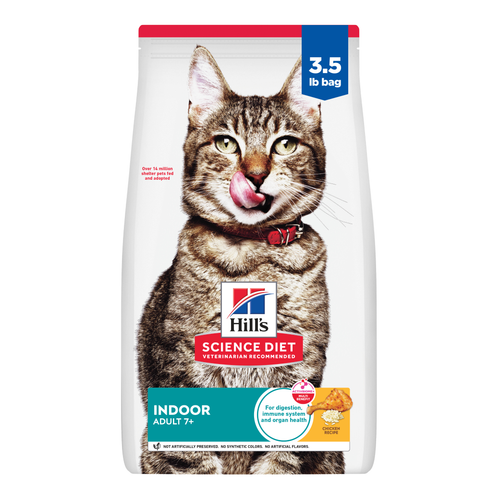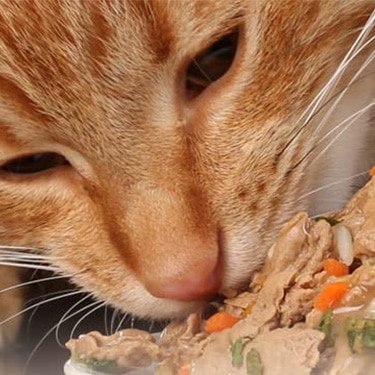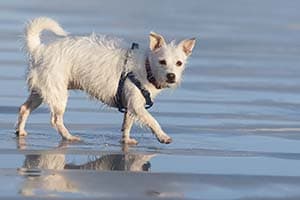
-
Find the right food for your petTake this quiz to see which food may be the best for your furry friend.Find the right food for your petTake this quiz to see which food may be the best for your furry friend.Featured products
 Hill's Science Diet Adult Chicken & Beef Entrée Dog Food
Hill's Science Diet Adult Chicken & Beef Entrée Dog FoodChicken & Beef Entrée in a delicious loaf with complete & balanced nutrition to help keep adult dogs active and healthy
Shop Now Adult Chicken & Barley Recipe Dog Food
Adult Chicken & Barley Recipe Dog FoodSupports lean muscle and beautiful coat for adult dogs
Shop Now Adult Large Breed Chicken & Barley Recipe Dog Food
Adult Large Breed Chicken & Barley Recipe Dog FoodSupports healthy joints, lean muscle, and beautiful coat for large breed dogs
Shop NowFeatured products Adult 7+ Indoor Chicken Recipe Cat Food
Adult 7+ Indoor Chicken Recipe Cat FoodSupports energy level and beautiful fur in mature indoor cats
Shop Now Senior Vitality Adult 7+ Tuna & Vegetables Stew
Senior Vitality Adult 7+ Tuna & Vegetables StewImproves Everyday Ability to Get Up & Go
Shop Now Adult Turkey & Liver Entrée Cat Food
Adult Turkey & Liver Entrée Cat FoodPrecisely balanced nutrition with the delicious taste of minced turkey & liver to help fuel the energy needs of cats during the prime of their life
Shop Now -
Dog
- Dog Tips & Articles
-
Health Category
- Weight
- Food & Environmental Sensitivities
- Urinary
- Digestive
- Joint
- Kidney
-
Life Stage
- Puppy Nutrition
- Adult Nutrition
- Senior Nutrition
Cat- Cat Tips & Articles
-
Health Category
- Weight
- Skin & Food Sensitivities
- Urinary
- Digestive
- Kidney
-
Life Stage
- Kitten Nutrition
- Adult Nutrition
Featured articles The Science Behind Our Love for Pets
The Science Behind Our Love for PetsLearn the scientific reasons why we have such strong connections with our pets, and what science says about the love between humans and our furry friends.
Read More What Is Littermate Syndrome? Pet Adoption Guide
What Is Littermate Syndrome? Pet Adoption GuideLearn more about littermate syndrome in dogs and cats and how to successfully navigate adoption and early socialization processes.
Read More How to Properly Mix Wet & Dry Pet Foods
How to Properly Mix Wet & Dry Pet FoodsAn Orange cat eating from a bowl filled with mixed food
Read More -


Whether you're a new dog parent with a puppy to train or a seasoned pet parent looking to make walks better, finding the best dog harness can be a bit puzzling. Start by focusing on these nine qualities and you can easily reign in the perfect harness for leading your pup to a better outing.
1. Connects Correctly
Narrow down your dog harness choices by deciding where you plan to connect your leash to the harness. Keep in mind, according to VetStreet, there are two main types: front clip and back clip. Which one you use depends on your dog.
Front-clip, back-clip, or leash?
Front-clip harnesses afford you more control over his behavior, but it doesn't always tame aggressive dogs by itself. It can also tangle underneath his front legs. Back-clip harnesses are very comfortable, easy to put on, and protect his neck. Unlike front-clip, however, they offer limited control over his trajectory. Both types are still preferable over leashes for training purposes, because you need to be gentler on his neck when guiding him. If your dog has more training, he may not need the extra guidance of a harness, but a leash will help ensure he stays close just in case. Unsure what's best for your dog? Check with your veterinarian who can help talk you through the options and find the best fit for your dog.
If and when you choose a harness, know that side attachments have become very popular for dogs in training because they gently and continuously keep him heading in the right direction while walking. Harnesses that attach the leash to the middle of the dog's back can often encourage pulling, and although they may help control your dog better than a typical leash, they may put more strain on you.

2. Measures Up
With both back- and side-clip harnesses, the thickness of the harness needs to be assessed. Be sure to measure your dog and determine the proper thickness and size based on his age and breed. And check the fit constantly, especially for young dogs that can quickly grow out of a design that fit perfectly yesterday.
3. Is Padding Necessary?
Breeds with short hair often benefit from padding to avoid rubbing and skin irritation. Padded harnesses also add extra flair and can make your dog look stylish, encouraging you to go out for invigorating walks more often.
4. It Meets Your Needs
One of the best ways to find the right harness is to go to a pet store that allows you to try different fits on your dog before you buy it. Most stores boast distractions that peak your dog's interest, so this is a perfect environment for testing out whether the harness will keep him well-behaved. Also, if your dog is excited when trying on different harnesses, you'll also be able to gauge the ease of getting the harness on and off.
5. In for the Long Haul
It's important to assess how well the harness will grow and adjust with your dog as he moves. Once you get the harness on your dog, make some adjustments and pay close attention to your dog's reactions and movements as you walk him around. Also, look at the material that the harness is made of; if the material seems cheap, there is a good chance that it will start to wear and deteriorate over time.


Tasty Tips
6. Reflects on What's Best
If you and your dog take walks early in the morning or later in the evening, a harness with reflective material may be worth the extra cost to ensure you're visible to traffic to help keep you and your dog safe.
7. A Perfect Match
Everyone has a leash they like to use for certain outings, but be sure the harness works well with your leash of choice. You may also need to reassess your leash length based on how much control the harness affords you when clipped to the leash.
8. Multiple Dogs
If you walk multiple dogs, you may need a harness that works better with split leashes. Some pet parents will purchase one harness with the clip on the left and another with a clip on the right, then use one Y-shaped leash to walk two dogs of the same size with the same leash. Still other pet parents may have a small dog and large dog, and choose two very different harnesses and leashes depending on their individual walking habits.
9. Masters the Material
Although the harness may lead to more controlled walks, and your dog may get into fewer messes, harnesses still need to be cleaned, especially cloth ones with padding. Some dog parents like leather for its feeling after being polished; leather is less likely to cause skin irritation because you can treat it this way over and over. Other dog parents prefer nylon for quick and easy washing. Your dog's size, allergies, and skin quality can help you decide which material is best.
Adapt to Both of Your Needs
After you've assessed all of these values in a dog harness, look for something that matches your style. Are you trendy and want something bright and colorful? Or are you more practical and want something that matches your dog and won't get dirty easily?
Once you find the best dog harness for your pup, be sure he gets the proper nutrition to keep up with an active lifestyle. As your dog ages and you continue to use a harness, you want to be sure their joints are healthy and strong to avoid injuries from longer treks. If you do notice your dog slowing down, or if he seems to be uncomfortable at any point, always be willing to reevaluate with your veterinarian whether a different food or a harness may be needed so he can continue to enjoy his time outside with you.


Dr. Laci Schaible is a small animal veterinarian, veterinary journalist, and a thought leader in the industry. She received her Doctor of Veterinary Medicine from Texas A&M University and her Masters in Legal Studies from Wake Forest University.
Related products

Supports healthy joints, lean muscle, and beautiful coat for large breed dogs

Supports lean muscle and beautiful coat for adult dogs

Chicken & Beef Entrée in a delicious loaf with complete & balanced nutrition to help keep adult dogs active and healthy

Chicken & Barley Entrée in a delicious loaf with great taste and precisely balanced nutrition to support 5 essential building blocks for lifelong health
Related articles

Discover how the field of dog science is giving us more and more insights into the inner workings of our furry best friends.

Learn how to help keep your dog's immune system in tip-top shape, including nutritional immune system support for dogs and other strategies.

Your dog's coat and skin are a big part of your dog's overall health. Ensure you keep your dog's coat healthy, by following these simple tips.

Wondering where can I buy a dog? Consider adoption and explore the pros and cons of adopting a dog from a breeder versus an animal shelter.

Put your dog on a diet without them knowing
Our low calorie formula helps you control your dog's weight. It's packed with high-quality protein for building lean muscles, and made with purposeful ingredients for a flavorful, nutritious meal. Clinically proven antioxidants, Vitamin C+E, help promote a healthy immune system.
Put your dog on a diet without them knowing
Our low calorie formula helps you control your dog's weight. It's packed with high-quality protein for building lean muscles, and made with purposeful ingredients for a flavorful, nutritious meal. Clinically proven antioxidants, Vitamin C+E, help promote a healthy immune system.

